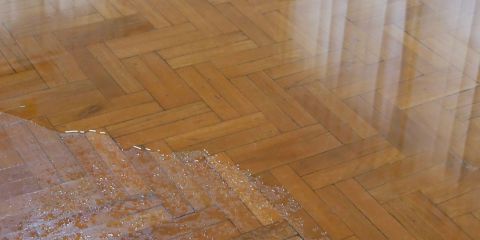2014
What is Required for Water Damage Restoration?
It is one of the worst things that can happen to a home — unwanted water flowing into a house, damaging or destroying everything in its path. Water damage comes from leaky roofs, broken pipes, and floods and other natural disasters. But no matter its source, its behaviour is the same, soaking into large surfaces, and fast.
Unmitigated water practically takes over a home, and if not fixed quickly, can cause permanent problems. Water damage restoration is vital to saving your house.
First Steps
The first step in water damage restoration is finding the source of the leak, and stopping it. An inspection of the home will aid this, as well as allowing restorers the chance to view the full scope of damage and identify which areas of a home need attention first.
Specific Restoration Options
Damaged flooring can sometimes be dried out and saved, depending on how long it has been exposed to water. If not, it must be removed and disposed of so mould cannot grow.
Structural drying, as well as drying out furniture and other household objects, is achieved using professional grade equipment. The process is monitored carefully, with restorers keeping an eye on moisture and humidity levels in the home. Some equipment usually remains on site longer term, in order to continue drying.
If any damage requiring repair occurred as a result of unmitigated water, restorers can work to fix these areas of concern. This includes patching and painting walls and ceilings, preventing the growth of mould, and cleaning any areas where bacterial or mould growth has occurred, and otherwise sanitizing surfaces. Rugs, draperies, and other upholstered or cloth items may be able to be cleaned and dried, restoring them to their original state.
When it comes to water damage restoration, the most important part is to get a handle on it quickly, and call in the experts.
